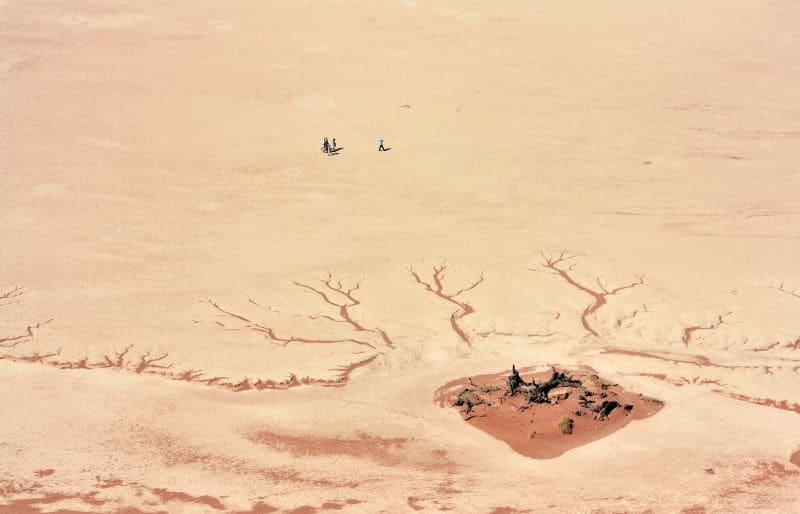Droughts are becoming one of the most pressing global challenges, with impacts expected to affect three-quarters of the world’s population by 2050.
In response, the UN Convention to Combat Desertification (UNCCD) and the European Commission Joint Research Centre (JRC) have launched the World Drought Atlas – the most comprehensive resource on drought risks and solutions to date.
This landmark publication calls for immediate national and international action to mitigate the cascading effects of droughts on societies, ecosystems, and economies.
The World Drought Atlas offers a detailed depiction of drought risks through maps, case studies, and infographics, illustrating their systemic nature. From agriculture and energy to river transport and international trade, the Atlas underscores how droughts trigger interconnected vulnerabilities across sectors.
It serves as both a technical tool for policymakers and an accessible resource for the general public, highlighting the global nature of drought impacts and the urgency of collective resilience-building efforts.
“The World Drought Atlas challenges governments, business leaders, and policymakers at all levels to radically rethink how they make decisions and manage drought risk,” said UNCCD Executive Secretary Ibrahim Thiaw. He called on nations, particularly those attending the upcoming UNCCD COP16 in Riyadh, to use the Atlas as a guide for shaping a more resilient future.

The systemic impacts of drought
The Atlas demonstrates how drought risks, exacerbated by human activities, extend beyond immediate water scarcity to disrupt hydropower, agriculture, and trade. Drought-related disruptions to inland waterway transportation, such as those seen with the Panama Canal, can hinder international trade, while reduced hydropower capacity leads to higher energy prices or blackouts. Such risks are compounded by climate change, unsustainable water use, and deforestation.
Agriculture, responsible for 70% of global freshwater use, remains particularly vulnerable. The Atlas emphasizes the role of “virtual water transfers,” where agricultural exports from drought-prone regions create water stress in producing countries. Small-scale farmers and marginalized groups are disproportionately affected, often lacking the resources to adapt to changing conditions.
Biodiversity also emerges as a critical factor in drought resilience. The Atlas highlights the dual relationship between biodiversity and drought: while droughts threaten ecosystems, robust biodiversity can mitigate their impacts. This underscores the need for conservation and sustainable land management as part of broader drought resilience strategies.
Learning from global drought experiences
Through 21 case studies, the World Drought Atlas presents lessons learned from droughts across diverse regions, from the Great Plains of the United States to the Yangtze River basin in China. These case studies demonstrate that no nation is immune to drought and stress the need for tailored, context-specific solutions.
Notably, the Atlas highlights the experiences of Indigenous communities, whose traditional knowledge and practices offer valuable insights into sustainable drought management. Regions like the Horn of Africa and the Central American Dry Corridor also showcase the severe humanitarian toll of droughts, with millions affected by food and water insecurity.
Pathways to drought resilience
The Atlas proposes actionable strategies to manage and adapt to systemic drought risks, focusing on governance, land use, and water management. Recommendations include early warning systems, microinsurance for smallholder farmers, agroforestry, and the reuse of wastewater. These measures not only address drought risks but also offer co-benefits such as improved food security and ecosystem restoration.
“The World Drought Atlas brings together experts and practitioners across disciplines and borders to create a comprehensive tool for understanding and visualizing drought’s multifaceted impacts while proposing sustainable solutions,” said Lauro Rossi of the CIMA Research Foundation.
Marthe Wens, a senior drought researcher at Vrije Universiteit Amsterdam, emphasized the human role in exacerbating drought risks: “Through our management of land and water, we have the ability to reduce drought impacts and increase our systems’ resilience.”
As the world grapples with escalating drought risks, the World Drought Atlas serves as a powerful call to action. “Droughts are one of the greatest challenges of the 21st century,” said Hugo Morán, State Secretary of Environment of Spain. “Climate change and the unsustainable management of land and water resources has made them more frequent and intens, affecting communities and ecosystems. UNCCD COP16 is a unique opportunity to strengthen the technical, political and financial conditions to address droughts and the World Drought Atlas represents a key instrument to support these efforts.”
With its launch, the Atlas sets the stage for a global movement toward proactive drought management, urging nations to transform scientific knowledge into concrete policies and actions. The full publication will soon be available on the UNCCD website.
Article Source:
Press Release/Material by UNCCD
Featured image credit: jcomp | Freepik




